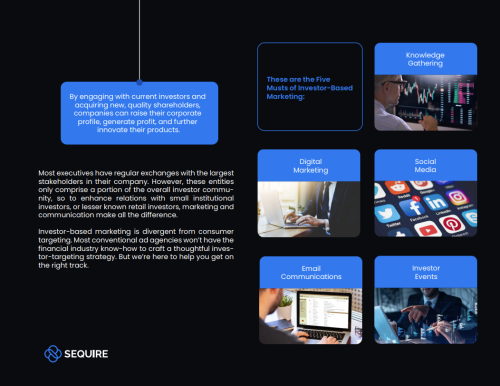An effective IR section on a corporate website serves analysts, institutional investors and individual shareholders well. Here are six essential ingredients for making sure your site is up to scratch.
1. Easy access for mobile users
Does your company’s website display clearly on a smartphone? Just as importantly: is it quick and easy for mobile visitors to get to the IR section? A key to success here is a ‘cascading’ mobile menu, which allows users to drill down seamlessly into the IR section.
Have a look at the global websites of Anglo-Dutch consumer goods company Unilever and German conglomerate Siemens on a smartphone to see examples of best practice in this area. Providing plenty of investor information in HTML format, rather than PDF alone, will also please mobile users: PDFs can be fiddly to view on a mobile device.
2. Well-signposted, comprehensive IR contact details
Providing prominent, detailed IR contact information isn’t just useful in its own right – it also conveys an impression of openness and transparency. To do this, first make sure the ‘IR contacts’ link is visible throughout the IR section. Don’t bury it in a sub-section such as ‘IR resources’, as some firms do. Second, include phone and email contact details for named IR officers, as well as a photo of each team member. Don’t forget to include the country code on phone numbers, and details of time zones and office hours.
3. A deep, rich and logical results archive
A tabbed results table is best, with a clickable tab for each year. Ensure the archive goes back as far as possible; don’t make the mistake of culling older results materials annually. Use standard – and therefore intuitive – icons to denote the formats of materials in the archive: PDF, Excel, and so on. And ensure the materials provided are comprehensive: HTML announcements, detailed documents in PDF, financial data in Excel, plus an audio or video webcast with accompanying transcripts.
4. Comprehensive background information and data on the company and its industry
This is where many corporate websites’ IR sections are weakest. This is a missed opportunity, because the web is a hugely powerful – and versatile – channel for informing and enthusing analysts researching your company for the first time. The key is to provide a ‘company overview’ in the IR section, ideally with financial data covering several years. Such an overview should also include information on company strategy, business model, divisions, structure, risk management, targets and market environment.
German pharmaceuticals group Bayer has an excellent IR sub-section that provides all this and more. This includes interactive charting tools – something that would be impossible to provide in a traditional annual report.
For companies in esoteric industries, it also makes sense to include information about the industry itself – and why it offers strong investment opportunities. Have a look at Canadian crop nutrient company Nutrien’s IR section for an example of this approach.
5. Jargon-free text
Too many IR sections read like legal documents. This is off-putting for all types of analysts and investors, but particularly so for individual shareholders who often lack the knowledge and expertise of their professional counterparts. Although legalese is unavoidable in official governance and disclosure documents, it’s possible to banish elsewhere – in shareholder FAQs and document summaries, for example. The use of plain English here will be appreciated by private investors and helps to send a message of friendly openness to all visitors.
6. Clear routes to the rest of the corporate website
Some companies have a dedicated IR website that is detached from the main corporate site. This can cause problems because investors and analysts are likely to want to look beyond the IR section; for example, to read executive biographies in ‘About Us’ or press releases in ‘Media’.
If IR material sits on a separate website, journeys to other information are intrinsically more difficult than if it resides in a dedicated section of the main corporate site. If your IR material is housed in a separate website, then it’s crucial to ensure there are plenty of cross-links to relevant material elsewhere.
Scott Payton is managing partner of London-based communications consultancy Bowen Craggs










